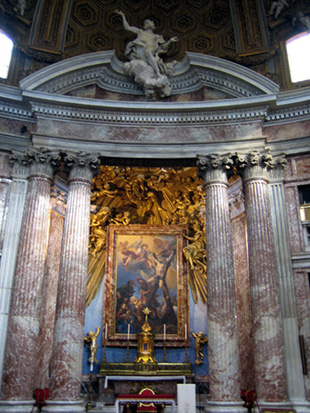












In music, the term 'Baroque' applies to the final period of dominance of imitative counterpoint, where different voices and instruments echo each other but at different pitches, sometimes inverting the echo, and even reversing thematic material.
The popularity and success of the Baroque style was encouraged by the Roman Catholic Church which had decided at the time of the Council of Trent that the arts should communicate religious themes in direct and emotional involvement. The aristocracy also saw the dramatic style of Baroque architecture and art as a means of impressing visitors and expressing triumphant power and control. Baroque palaces are built around an entrance sequence of courts, anterooms, grand staircases, and reception rooms of sequentially increasing magnificence. In similar profusions of detail, art, music, architecture, and literature inspired each other in the Baroque cultural movement as artists explored what they could create from repeated and varied patterns. Some traits and aspects of Baroque paintings that differentiate this style from others are the abundant amount of details, often bright polychromy, less realistic faces of subjects, and an overall sense of awe, which was one of the goals in Baroque art.
The word baroque probably derives from the ancient Portuguese noun "barroco" which is a pearl that is not round but of unpredictable and elaborate shape. Hence, in informal usage, the word baroque can simply mean that something is "elaborate", with many details, without reference to the Baroque styles of the seventeenth and eighteenth centuries.
By Appointment
PARIS CERAMICS
South Park Studios - Suite 10
88 Peterborough Road, London SW6 3HH
United Kingdom